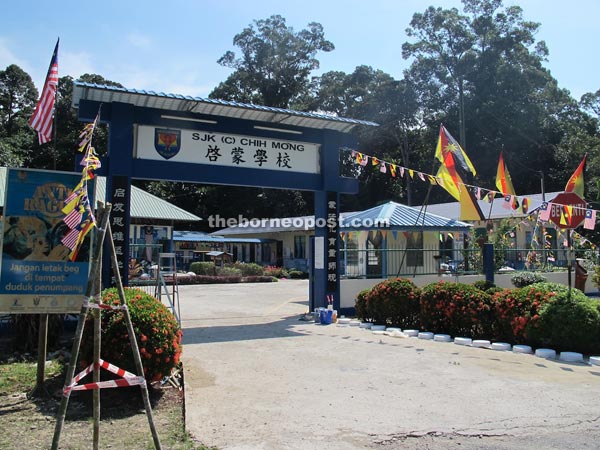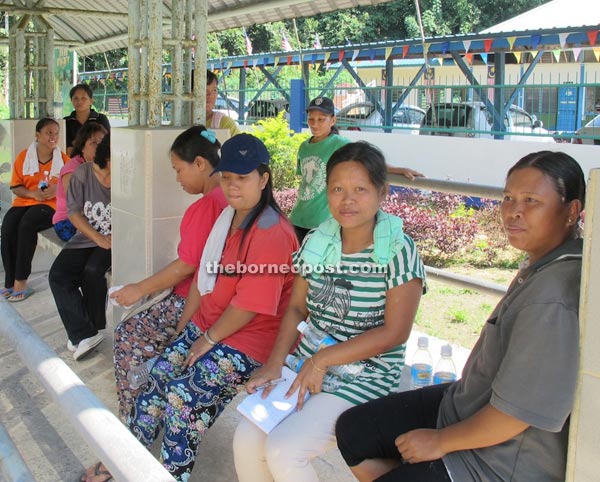
SJKC Chih Mong.

(From right) Sima, Linny and other mothers waiting to fetch their children at the bus stop outside SJKC Chih Mong.

Kapitan Kong Nguk Khee.
 KANOWIT: In moving away from the Chinese school’s history and tradition, half of the members of SJKC Chih Mong Board of Management are Ibans.
KANOWIT: In moving away from the Chinese school’s history and tradition, half of the members of SJKC Chih Mong Board of Management are Ibans.
Without realising it, in 2007, board chairman Kapitan Kong Nguk Khee initiated the sharing of decision-making power of SJKC Chih Mong’s board with the Iban community.
“There are 15 of us in the board of management. Eight of us are Chinese and the rest are Ibans. I made the decision to include the Iban members in 2007,” Kong told BAT 5 here yesterday.
The intention of Kong was simple – the participation of the Iban community is crucial to monitor the performance of the Iban students.
“I want to include the Iban leaders so that when we need to discuss with Iban parents about the performance of their children, these leaders can do that for us more effectively.
“The main purpose is to monitor the students’ performance, nothing else. Everything is about education, about helping the students to do better,” he said.
Chih Mong is one of the three Chinese primary schools situated along Jalan Penyalau.
There are only 43 students in the whole school and 25 of them are Ibans.
Kong believed that allowing participation of non-Chinese leaders was an inevitable trend, especially in rural areas
where non-Chinese students outnumber the Chinese ones.
“It is the same for the other two Chinese schools along Jalan Penyalau where the majority of students are non-Chinese students.
“The make-up of pupils of these three primary schools are 65 per cent Ibans, versus 35 per cent Chinese,” Kong revealed.
For Chih Mong, the Iban pupils are those from nearby longhouses – Rumah Unggang (27 doors) and Rumah Kasi (21 doors).
There are also many cases where two generations of these longhouse folk attended the same school, like Linny Tuang, 31 and Sima Chemenda, 32.
Linny attended Chih Mong between 1992 and 1997, and now her younger son is attending Primary One and older son, Primary Three of the same school.
As alumni, both Linny and Sima are sending their children to Chih Mong not only for a chance for their children to learn Chinese but also because of
the stricter demand for discipline and manners.
The two housewives believe that the ability to speak and read Chinese will also give the non-Chinese an edge over others.
“We live in Rumah Unggang which is very near to the school. The government school is too far, so we all choose to send our children here,” said Linny, echoing the sentiments of the other mothers waiting to fetch their children attending the pre-school at Chih Mong.
